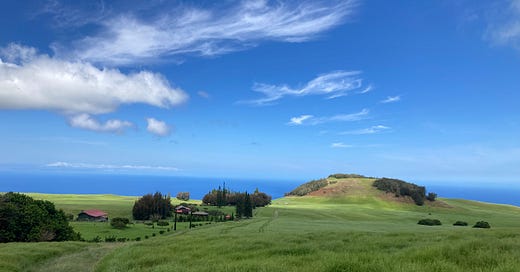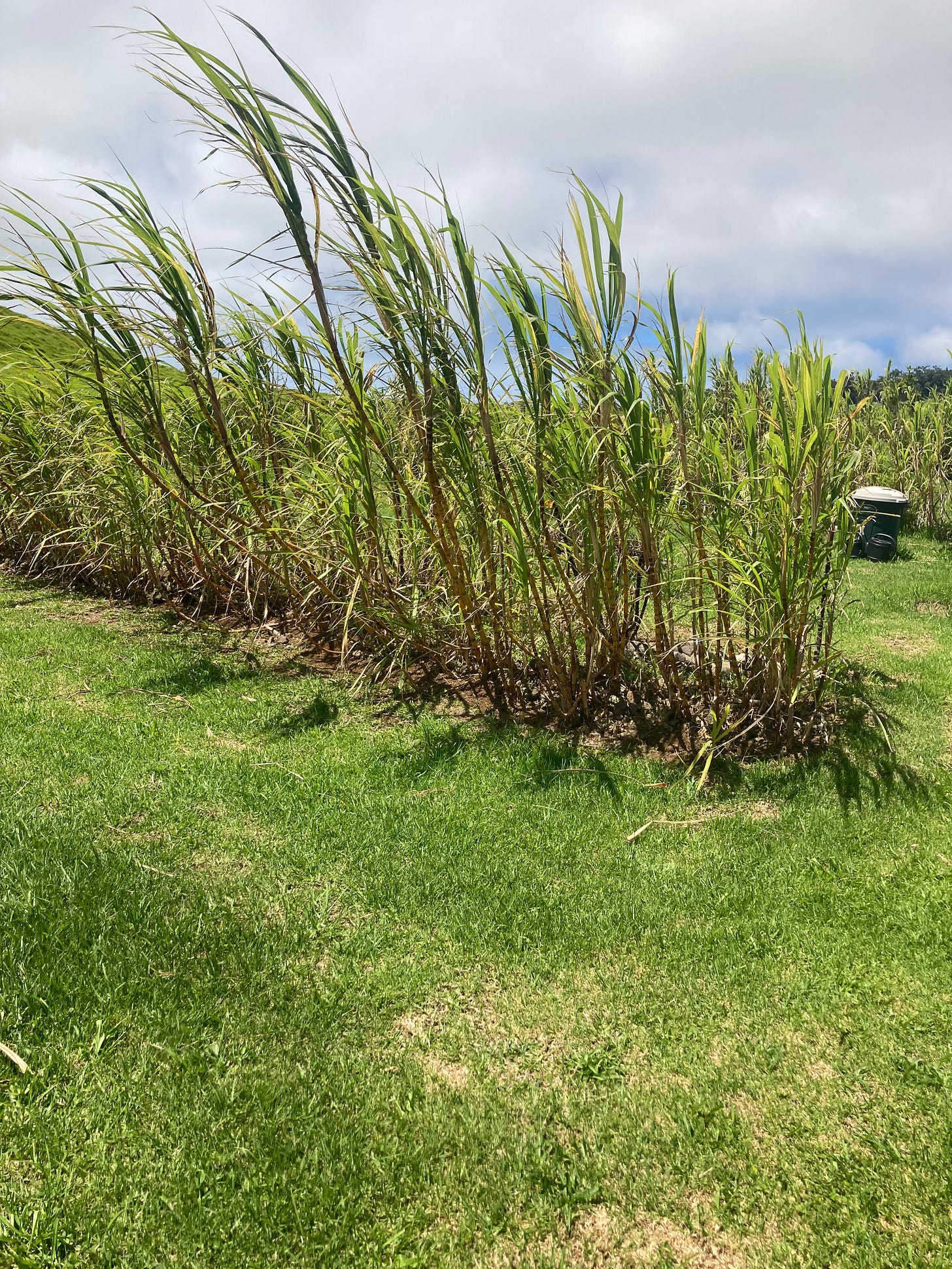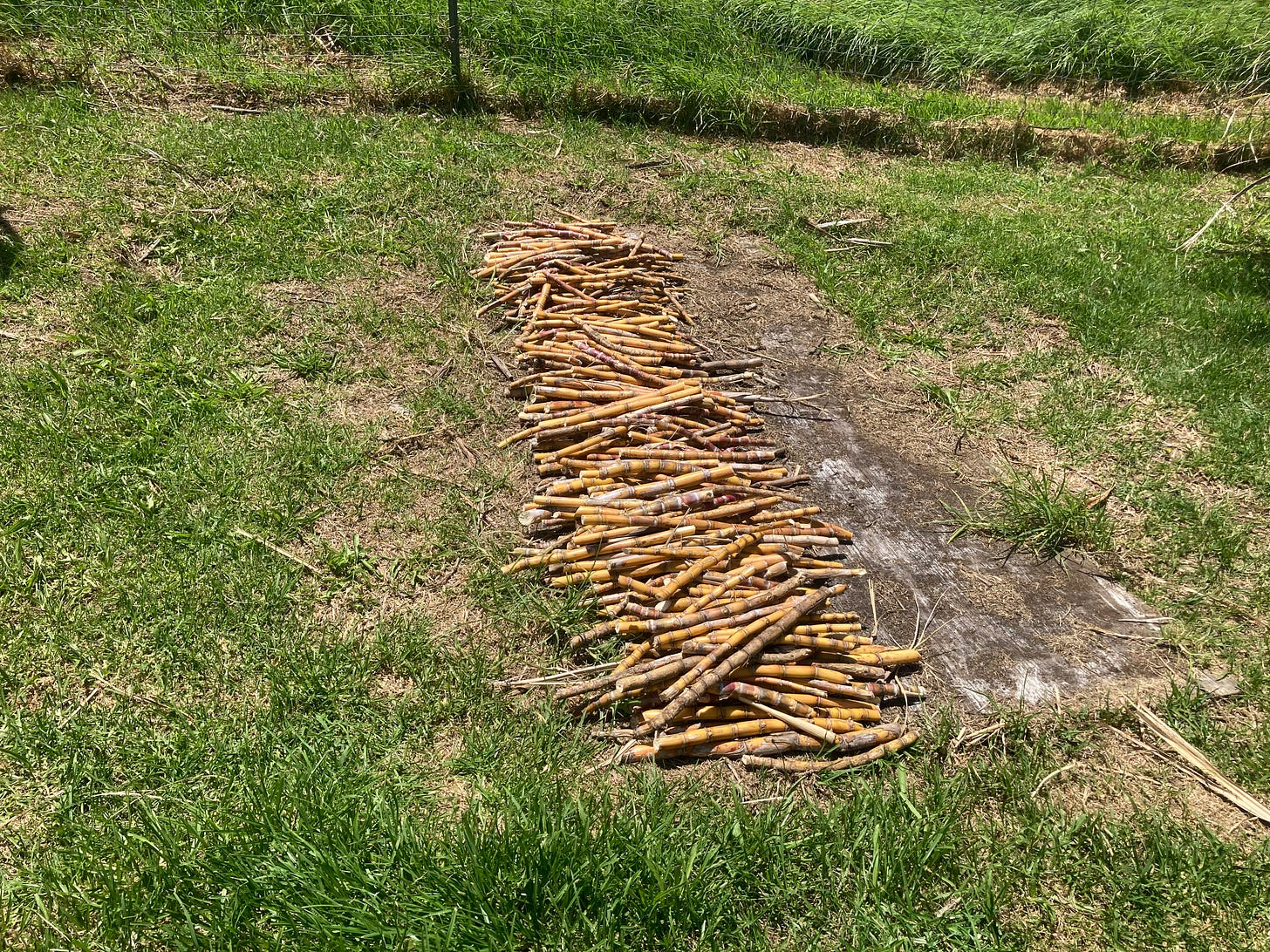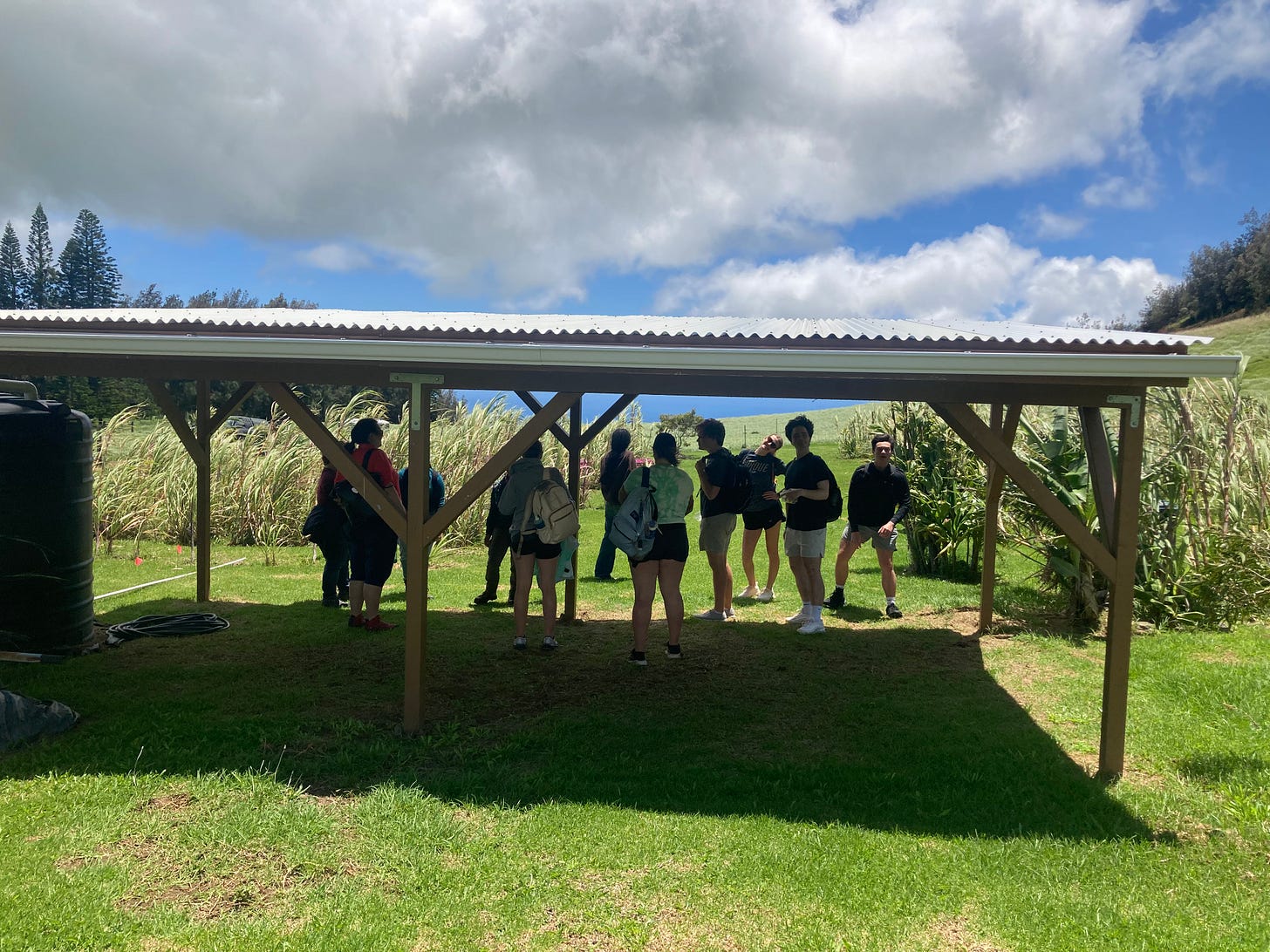A Hike Through the Past
By Giovanni Stabile. Gio is a Chemical Engineering undergraduate at Purdue University.
She wasn't... lying, I thought. Even my inner voice sputtered as I gasped for air. And I thought the bike trails back home were tough. I struggled up the hill, using the same footholds Danielle had marked -- thanks for making it easy for me :). But as our group neared the top, we couldn’t begin to believe what we would see.
Now I should probably explain how we got here.
Today is victory day! Yesterday, our group crushed the presentations with over three hours of demonstrations and discussions. Tomorrow, we will celebrate with snorkeling and a trip to Kona. But today is the best of all. We plan to visit a farm, and not any old farm, like the hundred-acre corn fields near Purdue that we’re used to. This farm spans ten miles down to the ocean and once fed over one-hundred thousand Hawaiians.
A view of the farm with the hill on the right. Photo by Giovanni Stabile.
When we arrive at the farm, we’re greeted by Kehau Marshall, the caretaker of this land. We pull through the wrought iron gates and hop from the cars. Then, Kehau, Bethany (a UH Hilo graduate student who we collaborate with), and Michelle (Bethany's mother), welcome us to the land with an oli, a Hawaiian chant that is a protocol for entering a new place.
With the ceremony complete, we’re welcomed to roam the land, and our group eagerly begins the half-mile walk to our destination, skipping and cartwheeling along the way, not caring to mask our emotions.
“This is straight out of a video game,” Chris exclaims.
Jake begins to talk about the land in return. The detail is magnificent; wooden fences were plucked from a fairy tale, with branches intertwined to decorate the land, and cows roam the countless acres of bright green pasture, disappearing over the horizon.
Once we reach our target, a shed in the middle of paradise, Kehau hands out a package of sweet bread as we lather on sunscreen, preparing for the hike.
“You see that gate,” she says, pointing fifty or so paces. “Once we walk through there, we'll need silence as we walk up the first half of the mountain.”
We nod and toss our backpacks in her car, setting down our loads for the hike. As we begin to walk, our goal is simple: appreciate nature. To feel the ocean of grass waving in the strong winds; marvel at the horizontal rain, which drenches us on the right side of our bodies while the left side scorches in the sun; and listen to our feet crunch on the damp yet solid ground. Kehau led us up the mountain, describing more about the land. Centuries ago, navigators brought canoe crops with them, including sugarcane, taro, and sweet potatoes. And the brilliance of their agriculture was apparent for two reasons.
First, they mastered dry farming, a technique foreign to many farmers today. This system relies solely on rainwater, rather than artificial irrigation via spraying or channels. From a mountaintop, the land would seem to be a monocrop of sugarcane, but lying flat on the ground were taro and sweet potatoes, crops that harnessed the rainwater from sugarcane, ensuring no drop went to waste.
Sugarcane braving strong winds in the garden. Photo by Giovanni Stabile.
Piles of sugarcane being prepared for experiments. Photo by Giovanni Stabile.
Second, this method of farming required minimal maintenance. Through the autonomous irrigation system (rain) and use of crops that would replenish, rather than starve the soil, farmers could save themselves the daily ten-mile walk (one way) across the farmland.
These farmers were brilliant, so why did we stray so far from their techniques? Kehau is eager to explain more, but to understand the challenges, we must comprehend the scale of the land. In other words, we must complete the ascent!
As I follow Danielle up the hill, with Marlo, Jake, and the others up ahead, it becomes apparent that this land is not just a source of food. There is a connection, an act of generosity where the land provides food, and we nourish it in return. As we climb higher, the long grass surrounds our legs as a reminder of nature's power, and as we near the peak, the expanse becomes clear. We watch the cows graze below, and I notice how in one field, the land is sparse with patches of green while in ours, the grass grows over a foot tall. This, I later learned, is another sustainable farming practice, where the cows move between various sections of land to allow grass to regrow.
The wind howls at our group, and we sit and stare in response. Peaceful. Ethereal. Powerful. These were the words we used to describe the setting, and I don’t think we could have said it any better.
The project oCEANIC team relaxing under the shed. Photo by Giovanni Stabile.
Alas, we couldn’t stay on the hill forever – although that wouldn't be so bad. We descend and eat our lunches under the shed roof. Now, there are a few tasks to finish our experience. Kehau walks us through her solitary garden, displaying her experiments with durable plants that withstand the fierce winds. She tests sugarcane in various soil depths, analyzing her hypotheses of which yield the most crop, and shows off plastic-like plants that brave semi-arid conditions. With her scientific thinking and generations of knowledge, Kehau is confident that she will bring traditional farming back to her land.
Finally, Michelle and Bethany brought one more gift – although not the kind that’s wrapped neatly with a bow. They feed the soil, pouring rich Hilo water (from the rainforest side of the island) on an endangered plant, offering peace and prosperity to Kehau and her farm. Their sign, a thank you to the navigators and farmers that came before, and the promise of the hope that people like Kehau bring, marks the end of our visit.








